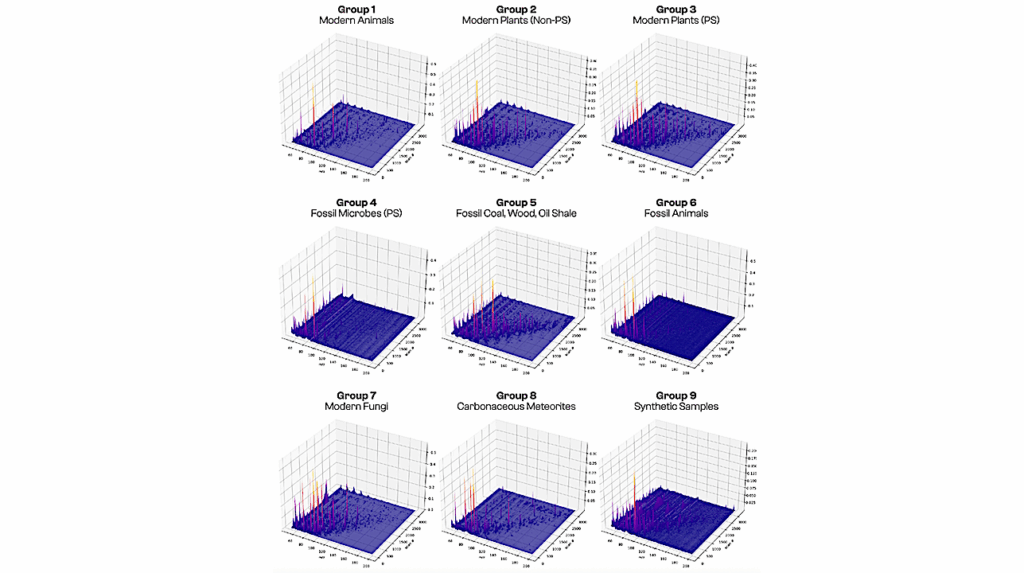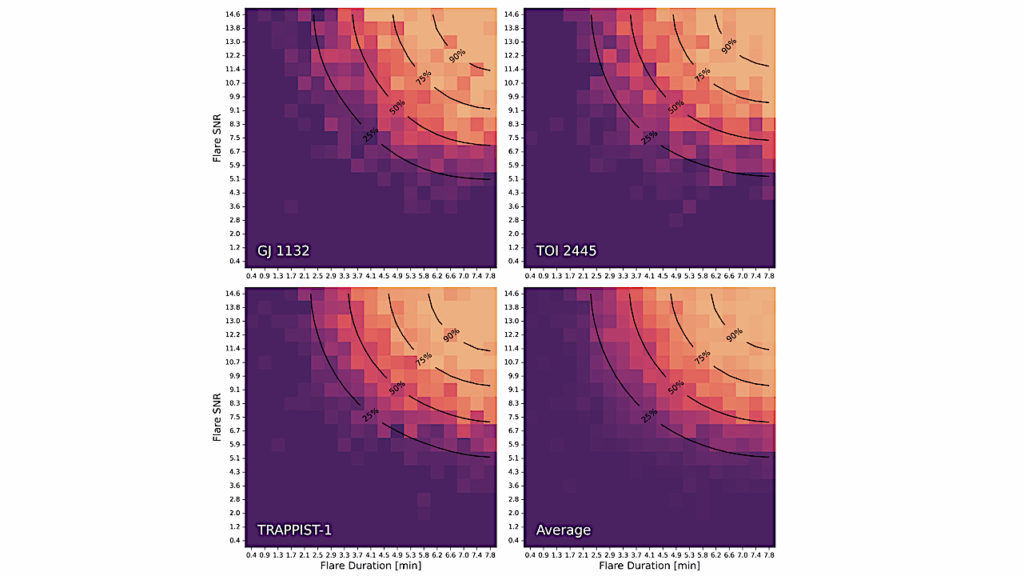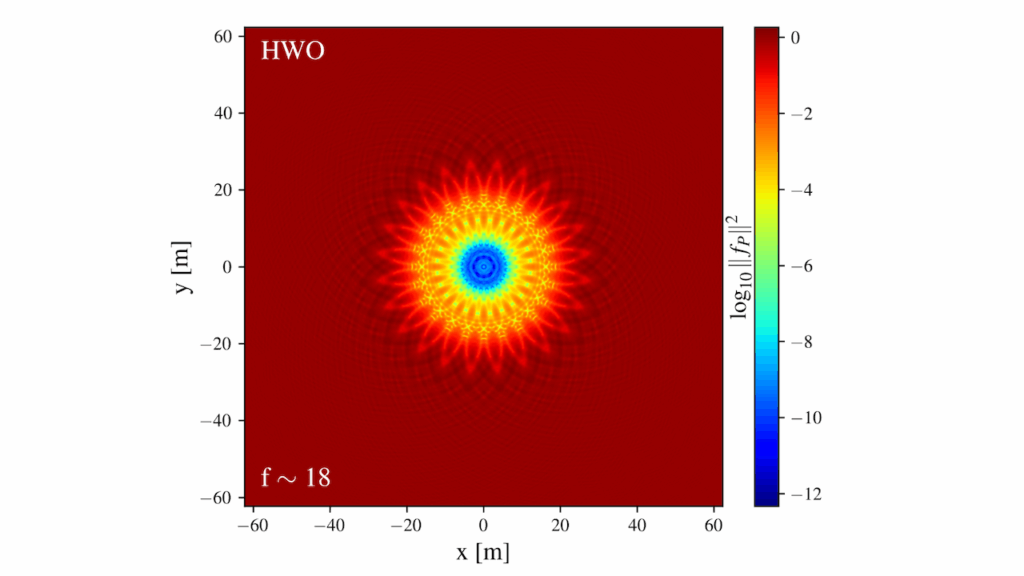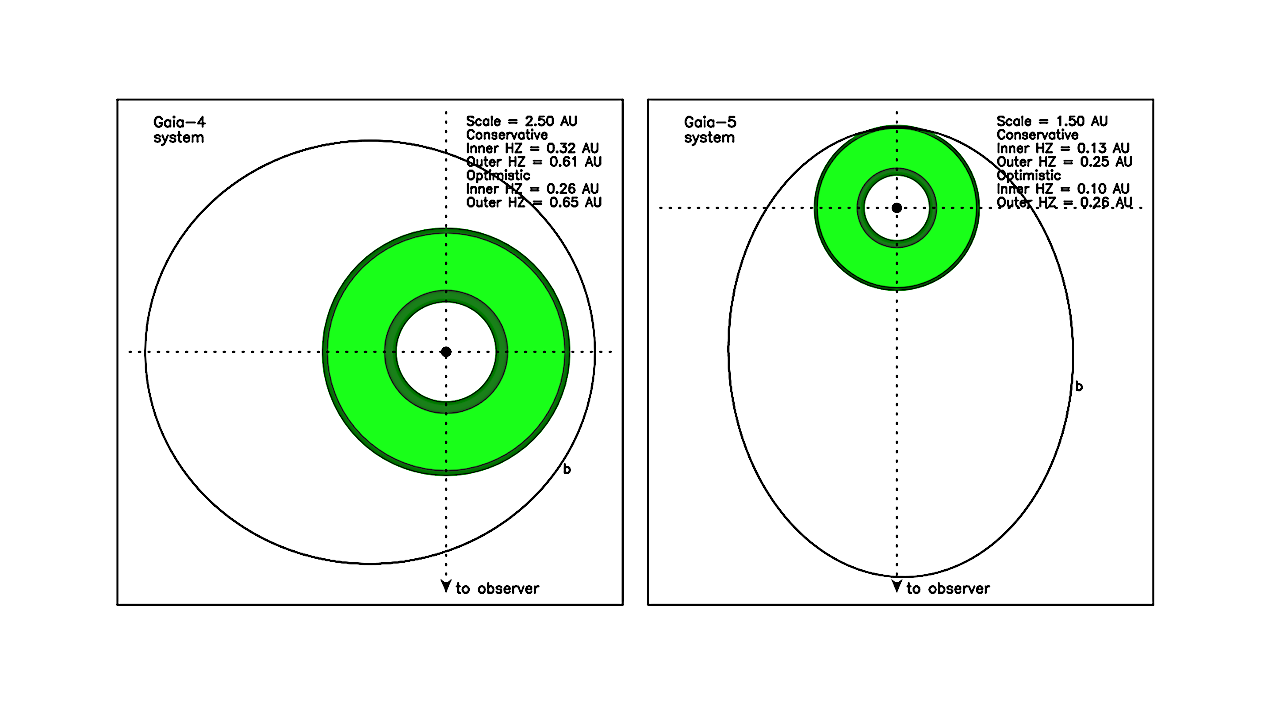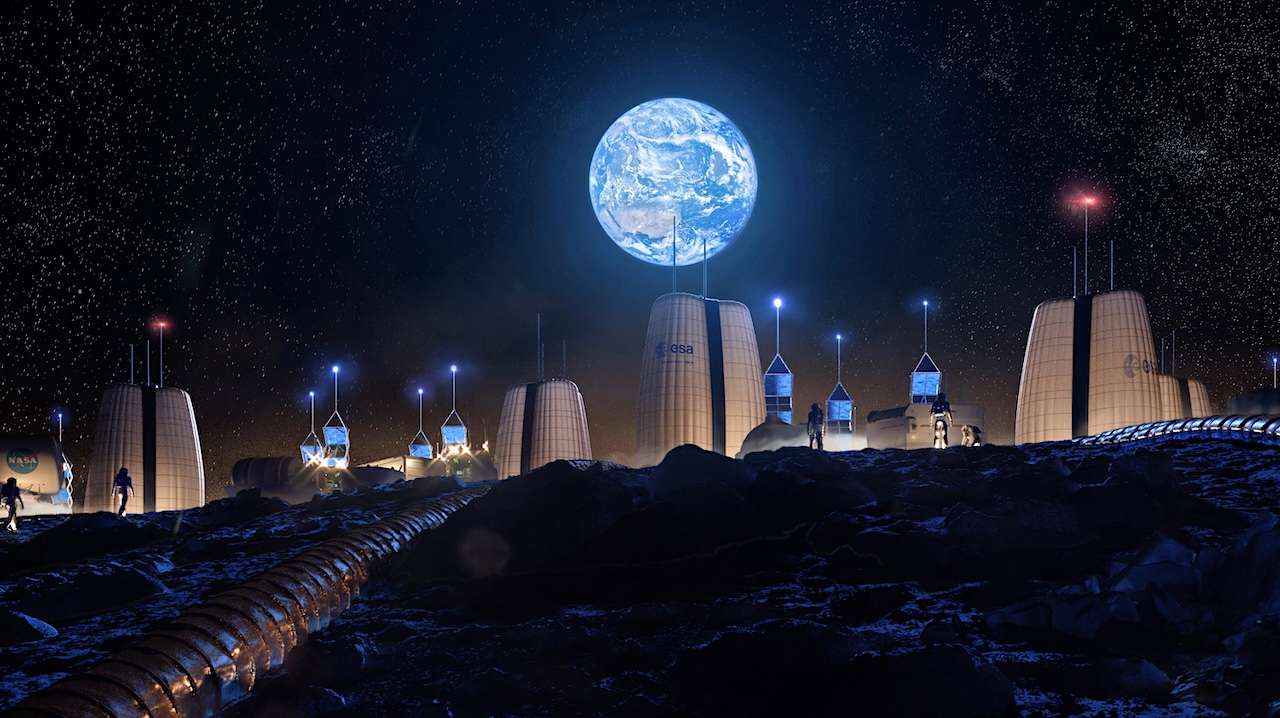Now Reading: Bistability, Oscillations, And Multistability On Hycean Planets
-
01
Bistability, Oscillations, And Multistability On Hycean Planets
Bistability, Oscillations, And Multistability On Hycean Planets
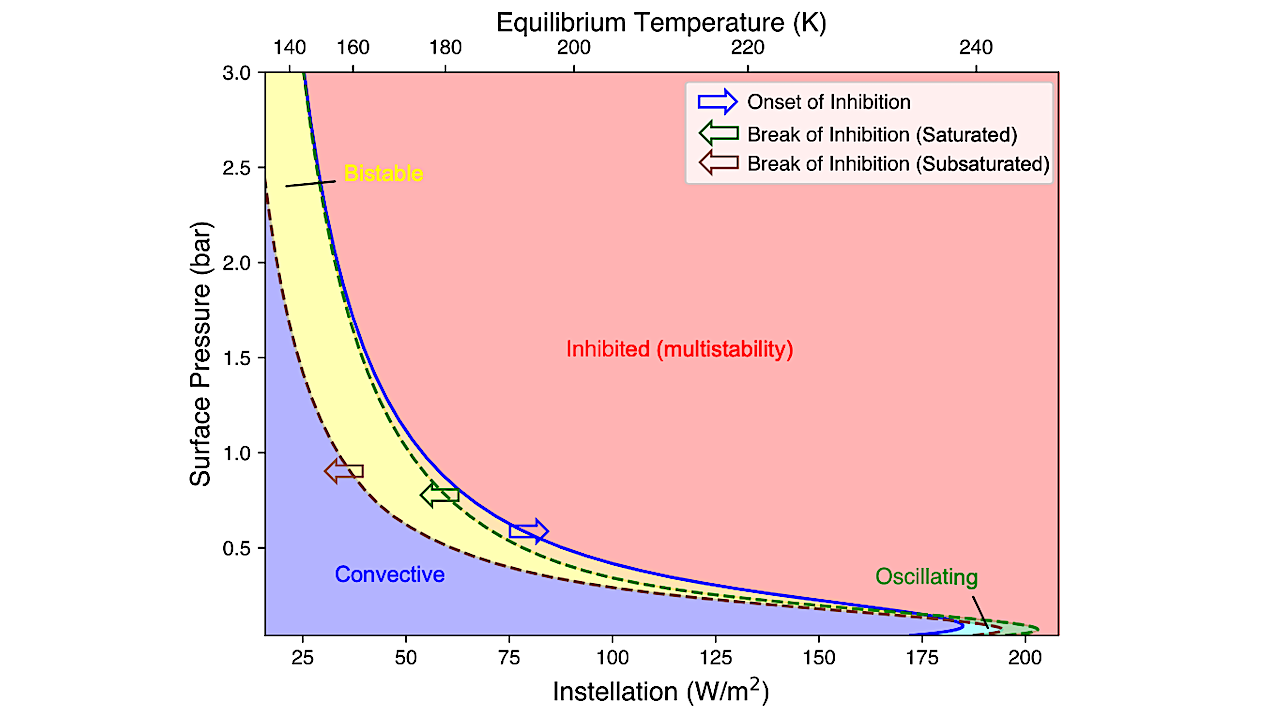

Regime diagram showing four distinct climate regimes, according to our semi-analytical model. The solid blue line represents the instellation above which an atmosphere enters an inhibited state, dashed lines represent the instellation below which an atmosphere becomes fully convective (green versus brown assumes the atmosphere above the inhibition layer follows a moist versus dry adiabat). Arrows indicate the direction of transition. In the lower left of parameter space, atmospheres are convective (blue), in the upper right they are inhibited (red); note, atmospheres in the inhibited regime additionally show multistability (see Section 4). Between the convective and the inhibited regimes, thicker atmospheres are bistable (light and dark yellow) and thinner atmospheres oscillate (light and dark green). All parameters used in the semi-analytical model are listed in Table 1. — astro-ph.EP
Hycean planets are hypothetical exoplanets characterized by H2O oceans and H2-rich atmospheres.
These planets are high-priority targets for biosignature searches, as they combine abundant surface liquid water with easy-to-characterize H2-rich atmospheres. Perhaps their most unusual climate feature is convective inhibition, which can dramatically alter a planet’s temperature structure.
However, so far hycean planets have mostly been investigated using 1D models that do not account for convective inhibition, and its effects are still poorly understood.
This work develops pen-and-paper theory to analyze the effects of moist convective inhibition on hycean planets. The theory is tested and verified against a 1D radiative-convective model. We show that hycean planets near the onset of convective inhibition can exhibit either bistability or oscillations, due to the inhibition layer’s trapping of heat and moisture.
Meanwhile, hot hycean planets exhibit multistability, in which the inhibition layer and surface climate show multiple stable equilibria due to the lack of constraints on the water cycle inside the inhibition layer. The water cycle inside the inhibition layer is influenced by numerous processes that are challenging to resolve in 1D, including turbulent diffusion, convective overshoot and large-scale circulations.
Our results demonstrate that hycean planets have unexpectedly rich climate dynamics. Meanwhile, previous claims about hycean planets should be treated with caution until confirmed with more self-consistent 1D and 3D models; this includes the claim that K2-18b might be habitable, and the proposal to infer H2O oceans on sub-Neptunes from JWST measurements of chemical species in their upper atmospheres.
Yichen Gao, Daniel D. B. Koll, Feng Ding
Comments: 20 pages, 9 figures, 1 table, accepted for publication in PSJ
Subjects: Earth and Planetary Astrophysics (astro-ph.EP)
Cite as: arXiv:2510.24224 [astro-ph.EP] (or arXiv:2510.24224v1 [astro-ph.EP] for this version)
https://doi.org/10.48550/arXiv.2510.24224
Focus to learn more
Submission history
From: Yichen Gao
[v1] Tue, 28 Oct 2025 09:35:05 UTC (282 KB)
https://arxiv.org/abs/2510.24224
Astrobiology, exoplanet,
Stay Informed With the Latest & Most Important News
Previous Post
Next Post
-
 012024 in Review: Highlights from NASA in Silicon Valley
012024 in Review: Highlights from NASA in Silicon Valley -
 02Panasonic Leica Summilux DG 15mm f/1.7 ASPH review
02Panasonic Leica Summilux DG 15mm f/1.7 ASPH review -
 03How New NASA, India Earth Satellite NISAR Will See Earth
03How New NASA, India Earth Satellite NISAR Will See Earth -
 04And Thus Begins A New Year For Life On Earth
04And Thus Begins A New Year For Life On Earth -
 05Astronomy Activation Ambassadors: A New Era
05Astronomy Activation Ambassadors: A New Era -
06SpaceX launch surge helps set new global launch record in 2024
-
 07Space Force plans new ‘Futures Command’ amid pressure to speed up modernization
07Space Force plans new ‘Futures Command’ amid pressure to speed up modernization












